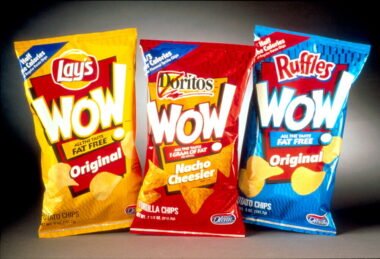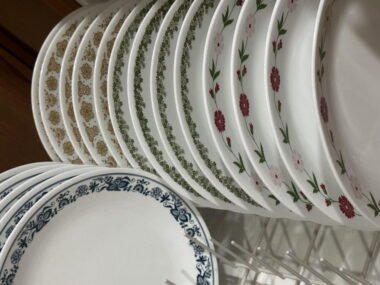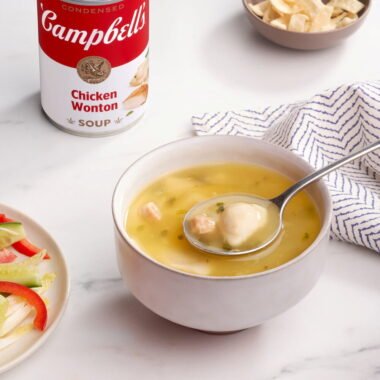- Since 1936, Fiestaware has introduced and discontinued several colors.
- About 36 color names have been dropped from 1930 to 2017.
- Reintroduced color names like Turquois complicate the notion of “discontinued.”
- Small shade and labeling changes like Old Ivory vs. contemporary Ivory effect collectibility.
- Certain discontinued Fiestaware colors are coveted by collectors because they reflect design trends and customer preferences.
More than just tableware, Fiestaware is a cultural symbol that has changed its color pallet to reflect each age. Fiestaware has been associated with brilliant colors, art deco style, and the flexibility to mix and match pieces to create a customized table setting since 1936. The company has offered a constantly shifting palette of colors that reflect design trends and American style for over 90 years. The intriguing history of discontinued and retired Fiestaware colors is covered in this page for collectors, aficionados, and everyone interested in this renowned brand.
A Brief Fiestaware History
Fiestaware was created in 1936 by the Fiesta Tableware Company (formerly Homer Laughlin China Company) to modernize tableware. Fiestaware offered a wide array of colors that could match any home décor when other dinnerware was restricted in color and style. Red, Cobalt Blue, Light Green, Yellow, Old Ivory, and Turquois (which appeared a year later) were its first six hues, laying the foundation for a heritage of innovation and strong design.
Over time, the brand’s color palette changed with consumer tastes and home decor. New colors were introduced and old ones were eliminated with each period. This dynamic approach has created a fascinating history where every discontinued color has a tale.
Color Palettes Change
The Beginnings of Classics
A bright and cheery hue helped Fiestaware become famous in the early decades. The first hues were instant hits:
- Red: 1936–1972, discontinued.
- Cobalt Blue debuted in 1936 and ended in 1941.
- Another original color, Light Green, was retired in 1951.
- Yellow: A cheerful color until 1969.
- Introduced with the initial lineup, Old Ivory was withdrawn in 1951.
- Turquois: Introduced in 1937, this color went through several discontinuations and reintroductions.
The collectible tradition began with these early hues. Their bold colors resonated with customers during a time of enormous social and cultural upheaval, and collectors now want many of their discontinued colors.
Midcentury Changes and Innovations
The 1950s and 1960s saw a color explosion expressing optimism and post-war wealth. This period brought Forest Green, Rose, Chartreuse, and Gray. They produced short runs that are today highly sought for. For instance:
- The 1951-launched Forest Green, Rose, Chartreuse, and Gray were discontinued by 1959.
- Medium Green: Produced from 1959 to 1969, it is now scarce.
These hues reflected the experimental spirit of the time, not merely decoration. With fewer pieces accessible, these colors’ fast retirement has increased their appeal.
Post-1986 Growth and Modern Retirements
Post-1986 was another key time for Fiestaware. With increased interest and improved designs, the company offered new hues. This decade also witnessed the retirement of numerous beloved shades:
- Black: From 1986 until 2014, Black represented a new take on traditional design.
- Apricot: 1986–1998 discontinued.
- Periwinkle and Sea Mist: Popular in the late 1980s and early 1990s, these hues were discontinued in 2006 and 2005.
- Cobalt Blue and Yellow (contemporary Versions): These names exist in both early and later eras, however contemporary Cobalt Blue retired in 2021 and modern Yellow in 2002.
Fiestaware’s color history is complicated throughout this time. Collectors must check production dates to confirm authenticity and worth because some names appear in many manufacturing eras.
The Complete Discontinued Color List
Below is a full table of the 36 retired color names and their manufacturing periods:
| Color | Introduction Year | Discontinuation Year |
|---|---|---|
| Red | 1936 | 1972 |
| Cobalt Blue | 1936 | 1941 |
| Light Green | 1936 | 1951 |
| Yellow | 1936 | 1969 |
| Old Ivory | 1936 | 1951 |
| Forest Green | 1951 | 1959 |
| Rose | 1951 | 1959 |
| Chartreuse | 1951 | 1959 |
| Gray | 1951 | 1959 |
| Medium Green | 1959 | 1969 |
| Antique Gold | 1969 | 1972 |
| Turf Green | 1969 | 1972 |
| Black | 1986 | 2014 |
| Apricot | 1986 | 1998 |
| Rose | 1986 | 2005 |
| Cobalt Blue | 1986 | 2021 |
| Yellow | 1987 | 2002 |
| Periwinkle | 1989 | 2006 |
| Sea Mist | 1991 | 2005 |
| Lilac | 1993 | 1995 |
| Persimmon | 1995 | 2008 |
| Sapphire | 1996 | 1997 |
| Chartreuse | 1996 | 1997 |
| Pearl Gray | 1999 | 2001 |
| Juniper | 1999 | 2001 |
| Cinnabar | 2000 | 2010 |
| Plum | 2001 | 2015 |
| Peacock | 2005 | 2014 |
| Heather | 2006 | 2009 |
| Evergreen | 2007 | 2009 |
| Chocolate | 2008 | 2012 |
| Marigold | 2008 | 2012 |
| Flamingo | 2012 | 2013 |
| Paprika | 2010 | 2016 |
| Sage | 2015 | 2018 |
| Claret | 2016 | 2017 |
| Tangerine | 2003 | 2017 |
Colors like Cobalt Blue and Yellow have several manufacturing phases. Even if previous versions were accessible, later production runs are ceased.
Complexities of “Discontinued” Definition
One of the noteworthy parts of Fiestaware’s color history is the ambiguity of defining “discontinued.” For example, Turquois was initially launched in 1937 and retired in 1969, yet it was subsequently resurrected. This reappearance implies that while classic Turquois items are no longer made, the hue remains in the collection. The difference between “Old Ivory” and “Ivory” indicates tint and formulation differences that might affect a collector’s worth. Such details are crucial for collectors who base their collections on manufacturing dates and color formulas.
Variations and Reintroductions
- Turquois represents the difficulties of identifying Fiestaware colors. Collectors value its vintage period (1937–1969), but its return has raised questions about its discontinuation.
- Ivory Variants: “Old Ivory” refers only to early items, whereas current “Ivory” may vary in tint and tone.
These details make the Fiestaware color history an interesting case study in branding and design progression as well as production adjustments.
Collector Advice and Market Trends
Discontinued hues are valuable to collectors. Certain colors are sought for in the antique market because to their rarity and historical significance. For instance:
- Medium Green (1959–1969): Due to its limited availability, this hue is highly sought after.
- Black (1986–2014) and Plum (2001–2015): Collectors who understand modern design trends love these modern classics for their contemporary appeal and eventual extinction.
Fiestaware is a dynamic design trend timeline due to manufacturing fluctuations and color retirements. The collectible character of these discontinued colors gives each piece a tale of its period, providing aesthetic enjoyment and a physical link to a bygone age.
Annual Rotation Effects on Brand
Fiestaware’s yearly color introduction and retirement has two effects. It keeps the product range fresh and aligned with design trends, but it also provides a rich library of hues no longer produced. As of early 2025, the lineup comprises 15 carefully selected hues and over 36 names that have been phased out. This dynamic cycle boosts consumer interest and the secondary market, where collectors buy antique pieces to complete their collections.
A Look at List Methodology
Identifying discontinued colors involves thorough analysis of historical and production data. Cross-referencing numerous data and historical periods, analysts found retired colors. The main criteria for color discontinuation are:
- Production Run Dates: Only colors with clear launch and discontinuation years are considered.
- Exceptions include reintroduced colors like Turquois. Vintage items remain collectible.
- Shade Variations: Minor shade variances, like those between Old Ivory and current Ivory, are significant to color categorization.
This methodical approach lets collectors make educated judgments and protects Fiestaware’s development.
Future Fiestaware Colors
Fiestaware innovates despite its outdated hues. Every year provides new colors that represent modern tastes and style. Peony, Jade, Sky, and Linen for 2025 demonstrate the brand’s dedication to keeping current in a competitive environment.
Color manufacturing is cyclical, so some hues fade while others return, providing a dynamic relationship between old appeal and current design. Collectors and fans anxiously await these yearly announcements since each new color advances Fiestaware’s story.
Collector and enthusiast benefits
Many collectors of Fiestaware want to preserve history as well as attractive tableware. For this reason, discontinued colors are valued:
- Scarcity: Limited manufacture makes them rare.
- Their historical significance is that they show design patterns from distinct times.
- Investment Value: Discontinued colors have risen in value, making them desirable as collections and investments.
- Aesthetic Appeal: Color variations and their tales give every collection character.
Collection Tips for Discontinued Colors
- To confirm authenticity, check manufacturing dates.
- Pay Attention to Naming Nuances: Avoid misunderstanding by distinguishing similar names like Old Ivory from Ivory.
- Monitor the Market: Collector demand might affect Fiestaware’s secondary market.
- Use reliable collector guidelines and records to verify production statistics and value predictions.
Conclusion
The way Fiestaware colors evokes different periods defines its heritage. The narrative of its discontinued and retiring colors is rich in history, design ingenuity, and changeable American consumer tastes. From 1936 until post-1986, each hue reflects cultural and artistic tastes.
Collectors must know the history of these discontinued hues to appreciate their beauty and significance as historical objects. Whether you’re a veteran collector or new to Fiestaware, its color palette’s progression shows the brand’s eternal appeal and ability to adapt to the times.
America’s design heritage lives on in Fiestaware’s discontinued hues. Each year brings new hues, enriching the legacy of retiring ones and encouraging fans to explore the interesting intersection of nostalgia, innovation, and beauty.
What makes a Fiestaware color discontinued?
Non-production Fiestaware colors are retired. This may be due to consumer trends, production tactics, or new colors. While certain hues may be revived under the same name, historical pieces from their initial manufacturing eras are retired.
Why do Cobalt Blue and Yellow have several manufacturing periods?
Some color names occur many times since Fiestaware made them in different eras. Vintage and modern reinterpretations might have different manufacturing runs, with later versions being abandoned after a period.
What distinguishes “Old Ivory” from “Ivory”?
“Old Ivory” refers to Fiestaware from 1936–1951, while current “Ivory” may vary in shade or composition. Variations impact collectibility and market value.
What makes discontinued colors attractive to collectors?
Limited production runs make discontinued hues scarce. Their historical relevance, design periods, and individuality attract collectors who hope they will appreciate in value.
Can I tell if Fiestaware is from a discontinued color run?
Collection guides and historical data help collectors verify manufacturing dates and shade specifics. Identifying genuineness also requires paying attention to tiny name differences like “Old Ivory” and current “Ivory.”
Will discontinued colors return?
Not all colors, like Turquois, are revived after discontinuance. Retro artifacts are scarce and typically vary, making them valuable.
Where can I learn Fiestaware’s color history?
Fiestaware enthusiasts use collector guides, historical records, and specialized sites to explore its color pallet progression. These tools reveal manufacturing dates, name differences, and market patterns that affect collectibility.
Collectors and fans may appreciate Fiestaware’s heritage by studying its discontinued hues’ complex history. The blend of innovation and tradition makes each retiring color a part of Fiestaware’s rich history, guaranteeing that its vibrant heritage will inspire future generations.




